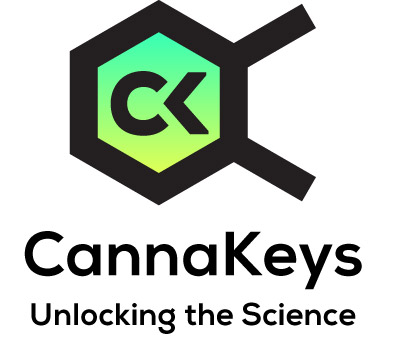HU-x Synthetic Cannabinoids Research Dashboard
What am I missing as a non-subscriber?
To see a full dashboard with study details and filtering, go to our DEMO page.
As a subscriber, you will be able to access dashboard insights including chemotype overviews and dosing summaries for medical conditions and organ system and receptor breakdowns for cannabinoid and terpene searches. Study lists present important guidance including dosing and chemotype information with the ability to drill down to the published material. And all outputs are fully filterable, to help find just the information you need. Stay up-to-date with the science of cannabis and the endocannabinoid system with CannaKeys.
CannaKeys has 153 studies associated with HU-x Synthetic Cannabinoids.
Here is a small sampling of HU-x Synthetic Cannabinoids studies by title:
- Hippocampal CB1 receptor mediates antidepressant-like effect of synthetic cannabinoid-HU210 in acute despair reaction model in mice
- Endocannabinoid System and Exogenous Cannabinoids in Depression and Anxiety: A Review
- The Metabolic Efficacy of a Cannabidiolic Acid (CBDA) Derivative in Treating Diet- and Genetic-Induced Obesity
- HU308 Mitigates Osteoarthritis by Stimulating Sox9-Related Networks of Carbohydrate Metabolism
- Deficiency of autism-related Scn2a gene in mice disrupts sleep patterns and circadian rhythms
Components of the HU-x Synthetic Cannabinoids Research Dashboard
- Top medical conditions associated with HU-x Synthetic Cannabinoids
- Proven effects in clinical trials for HU-x Synthetic Cannabinoids
- Receptors associated with HU-x Synthetic Cannabinoids
- Individual study details for HU-x Synthetic Cannabinoids
Ready to become a subscriber? Go to our PRICING page.
Page Quick Links
Select New Cannabinoid
Overview - HU-x Synthetic Cannabinoids
Description of HU-x Synthetic Cannabinoids
The HU-x series are synthetic cannabinoids that carry the initials based on their place of discovery Hebrew University, Israel.
Here we focus on the (+) and (-) cannabinoid enantiomers of 7-hydroxy-delta-6-tetra-hydrocannabinol-dimethylheptyl i.e., HU-210 and HU-211.
Initially developed and/or characterized by Mechoulam et al., (1988), HU-210 and HU-211 are two of several diverse members of the HU-family that have attracted significant attention in the international research community. For instance, HU-210 has full agonist activity at CB1 and CB2, while the (+) enantiomer, i.e., HU-211 does not, but instead acts as via different pathways such as an N-Methyl-D-aspartate (NMDA) antagonist.
Other members that may offer clinical insights may include HU-308 (CB2 agonism), HU-331, HU-444, HU-580, HU-671, HU-910, HU-914.
Other Names:
HU Family Synthetic Cannabinoids7-hydroxy-delta-6-tetra-hydrocannabinol-dimethylheptyl or 7-OH-delta-6-THC-DMH
HU-210 [(-)-enantiomer] (-)-7-OH-delta-6-THC-DMH (N. Titishov et al., 1989)
HU-211 [(+)-enantiomer]; (aka Dexanabinol) (+)-7-OH-delta-6-THC-DMH (N. Titishov et al., 1989)
HU-x Synthetic Cannabinoids Properties and Effects
Only Members can view Properties and Effects information. See DEMO page.
HU-x Synthetic Cannabinoids Receptor Binding
Only Members can view Receptor Binding information. See DEMO page.
Disclaimer
Information on this site is provided for informational purposes only and is not meant to substitute for the advice provided by your own licensed physician or other medical professional. You
should not use the information contained herein for diagnosing or treating a health problem or disease. If using a product, you should read carefully all product packaging. If you have or suspect that you have a
medical problem, promptly contact your health care provider.
Information on this site is based on scientific studies (human, animal, or in vitro), clinical experience, or traditional usage as cited in each article. The results reported may not necessarily occur in all individuals. For many of the conditions discussed, treatment with prescription or over-the-counter medication is also available. Consult your physician, nutritionally oriented health care practitioner, and/or pharmacist for any health problem and before using any supplements or before making any changes in prescribed medications.

